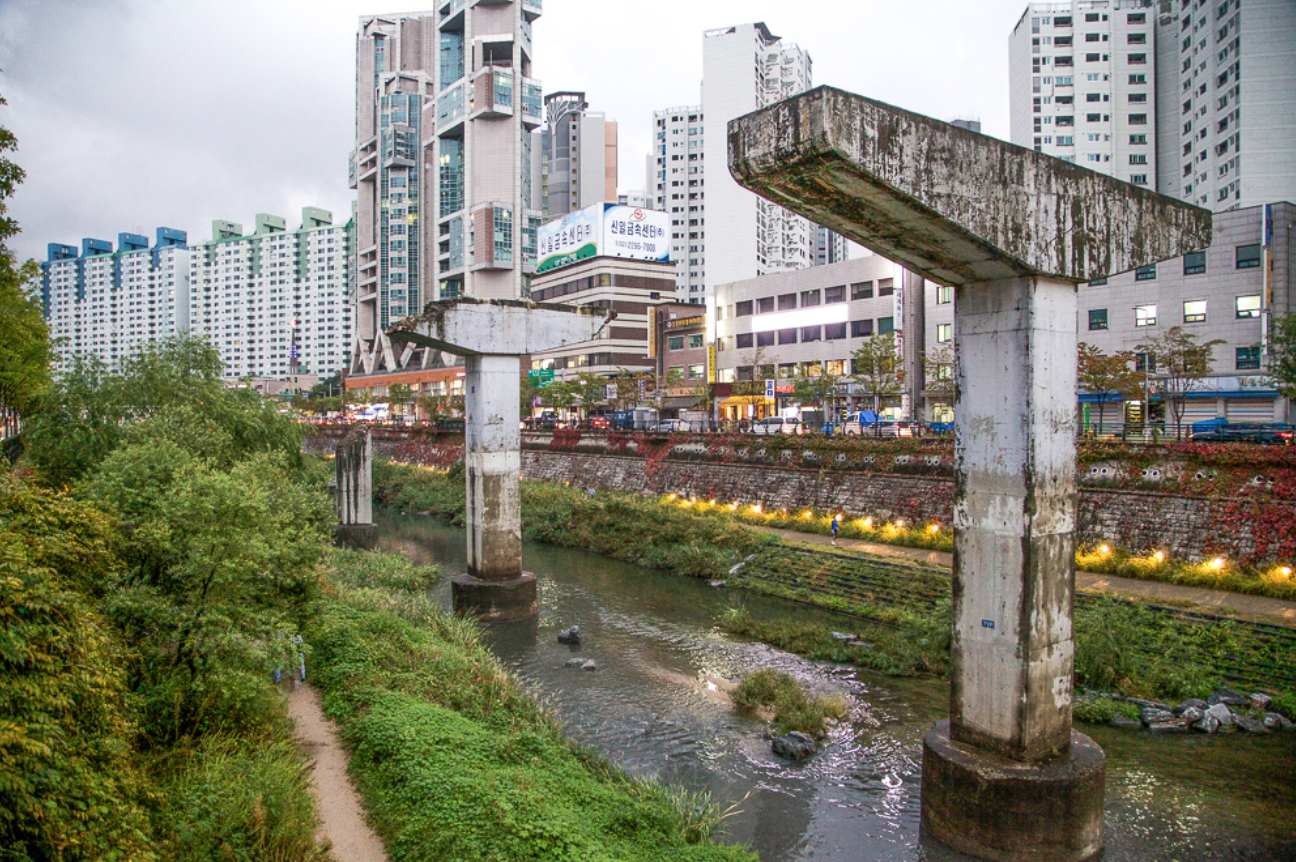Department of Visual Arts / University of California, San Diego
Cool Seoul
by Kyong Park
Because of the historical absence of parks, plazas, and other centrally located open spaces that have been traditional in the European cities, the city of Seoul, and other South Korean cities, has instead relied on its rivers and creeks as the main source of public spaces for recreation and communal purposes. And like other cities around the world, modernization of urban spaces has redeveloped and altered most of their rivers and creeks, burying them under roads, buildings, and parking spaces. However, to prepare for the 1988 Seoul Olympics, the government's launch the Hangang River Development Project from 1982 to 1986, creating a 41.5 km long and 39.9 km2 linear park that began to provide much needed green and open spaces for its citizens. Its success has brought the Hangang Renaissance Project (2007-2030) to further expand and improve this growing linear park, together with the Cheong Gye Chon Restoration, a $900 million project that unearthed the most important creek at the heart of Old Seoul that was buried under a road and an elevated highway into an 8.4 km (5.2 mi) long linear park that opened in 2005. Along with the above projects, this lecture will present why and how South Korean cities have developed Linear Park Systems throughout their cities.



